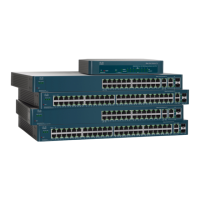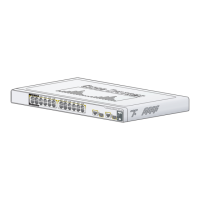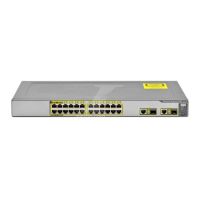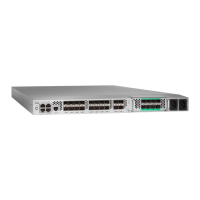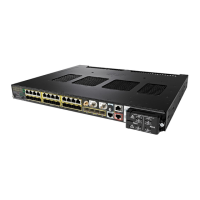VLAN Management
Regular VLANs
Cisco 500 Series Stackable Managed Switch Administration Guide 262
14
Default VLAN Settings
When using factory default settings, the device automatically creates VLAN 1 as
the default VLAN, the default interface status of all ports is Trunk, and all ports are
configured as untagged members of the default VLAN.
The default VLAN has the following characteristics:
• It is distinct, non-static/non-dynamic, and all ports are untagged members
by default.
• It cannot be deleted.
• It cannot be given a label.
• It cannot be used for any special role, such as unauthenticated VLAN or
Voice VLAN. This is only relevant for OUI-enabled voice VLAN.
• If a port is no longer a member of any VLAN, the device automatically
configures the port as an untagged member of the default VLAN. A port is
no longer a member of a VLAN if the VLAN is deleted or the port is removed
from the VLAN.
• RADIUS servers cannot assign the default VLAN to 802.1x supplicants by
using Dynamic VLAN Assignment.
When the VID of the default VLAN is changed, the device performs the following
on all the ports in the VLAN, after saving the configuration and rebooting the
device:
• Removes VLAN membership of the ports from the original default VLAN
(takes effect after reboot).
• Changes the PVID (Port VLAN Identifier) of the ports to the VID of the new
default VLAN.
• The original default VLAN ID is removed from the device. To be used, it must
be recreated.
• Adds the ports as untagged VLAN members of the new default VLAN.
To change the default VLAN:
STEP 1 Click VLAN Management > Default VLAN Settings.
STEP 2 Enter the value for the following field:
• Current Default VLAN ID—Displays the current default VLAN ID.
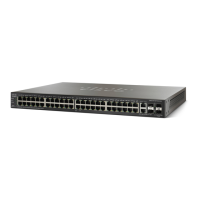
